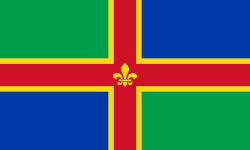| Greyfriars, Stamford | |
|---|---|
 The surviving 14th-century gatehouse to the medieval friary | |
 | |
| Type | Friary |
| Location | Stamford, Lincolnshire, England |
| Coordinates | 52°39′17.9″N0°28′11.9″W / 52.654972°N 0.469972°W |
| Built | Friary prior to c. 1230 Gatehouse (extant) early 14th century |
| Official name | Whitefriars Gate |
| Reference no. | 1005006 |
Greyfriars, Stamford was a Franciscan friary in Stamford, Lincolnshire, England. It was one of many religious houses suppressed and closed during the Dissolution of the Monasteries in the 16th century. The site is now part of the NHS Stamford and Rutland Hospital.


